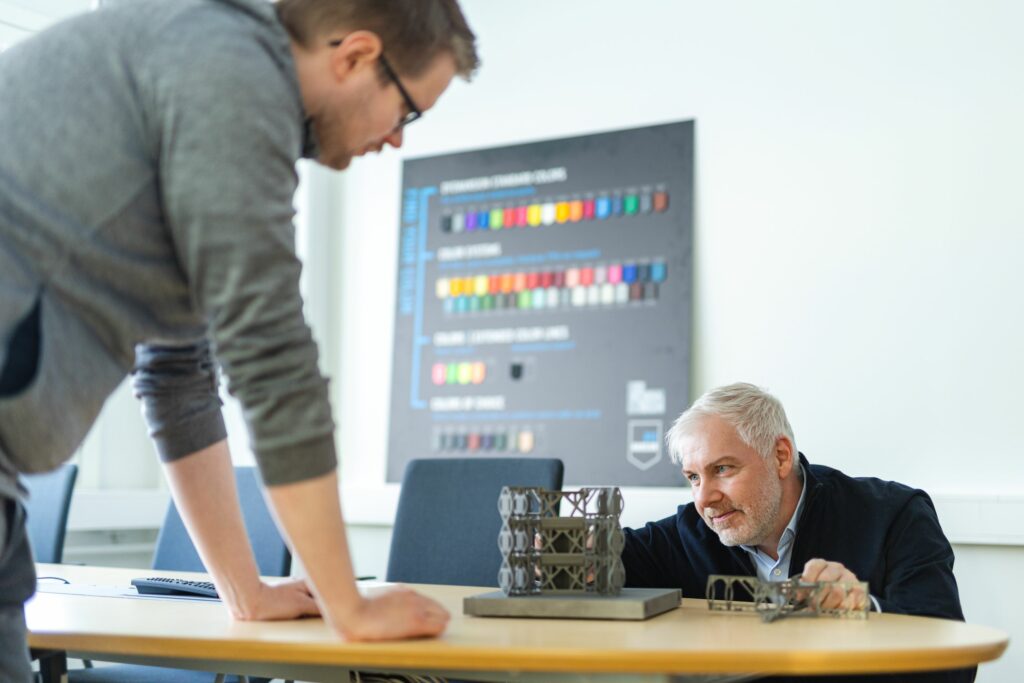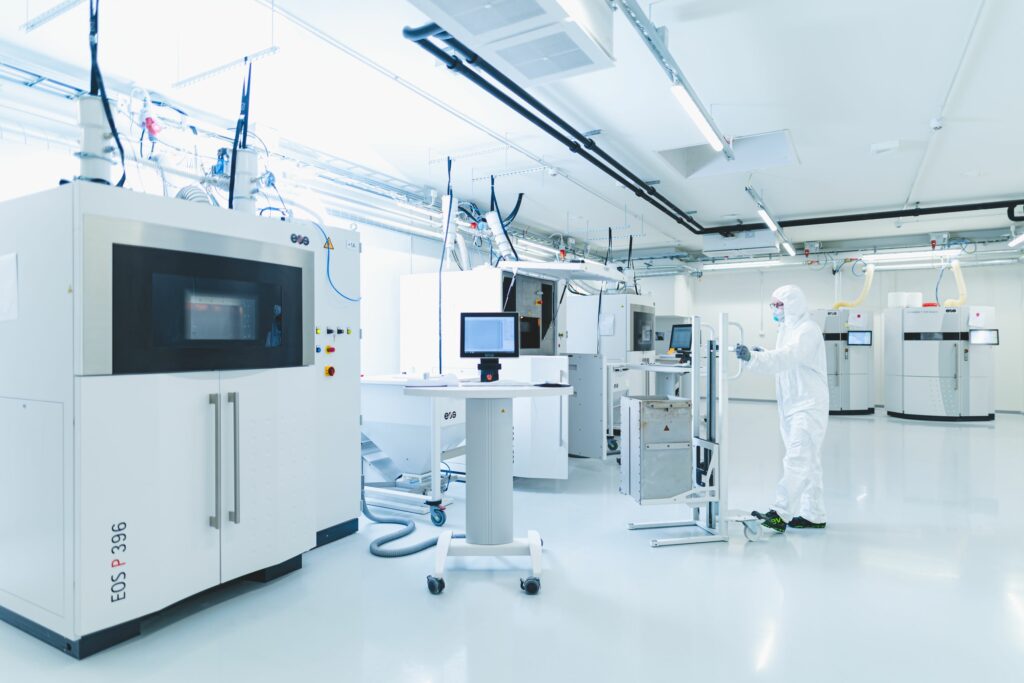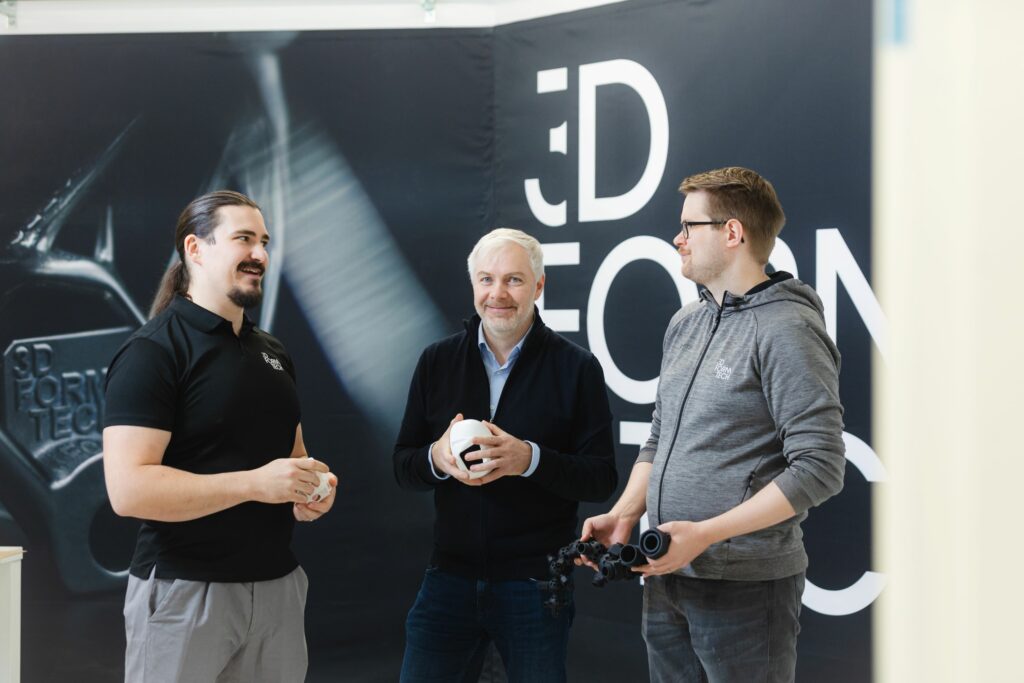🇫🇮 Digital spare parts and sustainability drive 3D Formtech’s growth in the next decade

When the 10-year-old 3D Formtech was born, 3D printing was used for prototyping. Now, batches of thousands of pieces are commonplace.
Toni Järvitalo, CEO of 3D Formtech, believes that the growth of 3D printing in the coming years will be driven by the proliferation of digital spare parts and sustainability issues.
“The value of 3D printing will grow in the coming years as it is combined with the manufacture of digital spare parts. In the future, there will be less inventory and spare parts can be made quickly with 3D printing,” says Järvitalo.
Sustainability will also play an increasingly important role, and low-carbon materials will be developed further.
“Abroad we have already been asked first how we produce energy, even before we have gone through a single technical detail of 3D printing. This has not yet happened in Finland,” says Järvitalo, adding that the company has already responded to the change with green electricity and solar panels.
In fact, sustainably produced energy is one of Finland’s competitive advantages, as it significantly reduces the carbon footprint of the piece.
One man and a machine
Toni Järvitalo was first introduced to prototyping with powder bed fusion in Nokia’s product development department.
“It was there that I got an idea of what you can do with better 3D printing. At the time, 3D printing was only talked about as a technology for prototyping, but I thought it had the potential to be used for manufacturing finished products,” says Järvitalo.
From Nokia he went to Ixonos, from where he bought an EOS P100 and set up 3D Formtech.
The company, which celebrates its 10th anniversary in April, has grown steadily. Production capacity has been gradually increased by new machine acquisitions and is already sufficient for large series. With a turnover of over €3 million, the company has 19 employees and eight 3D printers, six for plastic and two for metal. It actively supplies 3D printers to around 12 countries.
The company currently produces 10 000 parts per week and is aiming for an annual production rate of one million components by 2026.
“I have always considered 3D Formtech a trailblazer. We have done a lot of pioneering work in 3D printing of plastics. We brought new post-processing equipment to Finland, we were the first to introduce mechanised dyeing, and now we are introducing chemical polishing,” says Järvitalo.
Technology is evolving rapidly
3D Formtech has been a growth company from the start. Now in its first decade, Järvitalo says the company is a teenager. It has taken work and luck.
“You have to remember that entrepreneurship and business success requires a lot of work, good customer service and luck. For example, without luck, a client who is a major player could have been missed. We’ve also had some good partners. In Finland, we have done many projects with the ELY Centre (Centre for Economic Development, Transport and the Environment), for example. The funders have also believed in us, and we have obtained good financing conditions.”
Around the same time as 3D Formtech, several 3D printing companies were set up in Finland.
“It was a significant step for the domestic 3D printing industry that companies were born and have grown steadily. 3D printing is a very capital-intensive industry, as the equipment is very expensive. In Finland, it is not easy to get funding for small start-ups or manufacturing companies, which has slowed down the spread of 3D printing,” says Toni Järvitalo, pointing to Sweden as an example, where capital has been sufficient to rapidly increase the equipment and expertise.

From prototypes to thousands
In ten years, machines have become faster and processes and parameters more productive. The training of designers has improved and many new 3D printing software packages have come onto the market. The final quality is also at a different level than it was ten years ago.
“In 2014, we were always talking about prototype quantities of dozens of pieces. It was really rare to talk about even a thousand. Nowadays, a series of a thousand or tens of thousands of pieces is commonplace,” says Järvitalo.
“Although 3D printing has been around for twenty years, I feel that the technology is just at the beginning of its journey. The progress in the last five years has been tremendous and in 30 years the technology will be on a completely different level.”
FAME acts as an information provider
Knowledge of the possibilities of 3D printing is slowly spreading. For example, the FAME Ecosystem for 3D printing, set up in 2020, has helped spread the word to industrial companies.
3D Formtech was one of the founders of the ecosystem.
“The FAME Ecosystem is an important information provider for 3D printing in the industrial field. It is vital to have a neutral source of easily accessible, reliable knowledge and comprehensive training to encourage companies to adopt 3D printing.”
Järvitalo says that companies’ knowledge of the quality and possibilities of 3D printing, especially for metals, is often still in the past.
“I used to think that if we spread the word about 3D printing, the word would spread, but we have limited opportunities to do so. If we talk to 100 companies a year, that’s really very few on the scale of Finland as a whole.”
Järvitalo sees that when awareness of the possibilities of 3D printing spreads through FAME or even competitors, companies become interested in the subject and it has a big multiplier effect.
He sees that FAME could also play a big role in exporting domestic 3D printing expertise abroad by helping to build trust in Finnish companies.

Big companies are taking off
Järvitalo believes that a big change today is that large companies are adopting 3D printing and considering it as a mature manufacturing technology.
“For big companies, such as paper machine manufacturers, the component is part of such a massive package that they have had to get verification and certification right first. This has already been achieved, but smaller companies have been able to use 3D printing more easily from the start.”
3D Formtech has from the outset focused specifically on quality and high-quality end-products for the manufacturing industry. That’s why it uses ISO-compliant materials, post-processing techniques, quality systems, equipment, and in-house processes, among other things.
Many 3D printing companies have recently announced new equipment purchases.
“The market is now showing signs that there will be a lot of big deals on the 3D printing side this year and next year in both plastics and metals. Big companies are starting to adopt 3D printing technology, and that could very much boost the Finnish 3D printing industry,” says Järvitalo.

Ten years of 3D Formtech
- 2014 The idea for 3D Formtech is born on the deck of a summer cottage sauna, the company is founded in April. In the beginning, there are only a few customers. The decisive factor is the Subcontracting Fair in the autumn, where many important customers are found.
- 2016 A big new customer brings the opportunity to invest in a new machine. It is 30% faster and has better laser parameters than the first machine. The company also hires an employee.
- 2017 Move to new premises. Purchase of a new large plastic machine. About 6 employees.
- 2018 Purchase of first metal machine. A small machine shop was set up for metal production, including the purchase of a CNC milling machine.
- 2019 Acquisition of a large plastics processing machine.
- 2020 3D Formtech co-founded the FAME ecosystem.
- 2021 The acquisition of a large and small plastic machine increased production capacity by more than 30%.
- 2022 ISO9001:2015 certification.
- 2024 The company celebrates its 10th anniversary. It has 19 employees, a turnover of over 3 million and actively supplies around 12 countries.
Originally published on 26 April by FAME.
Announcements are published as a service to readers. The sender is responsible for all content.
Announcements for publication can be submitted to in**@ar**************.com.